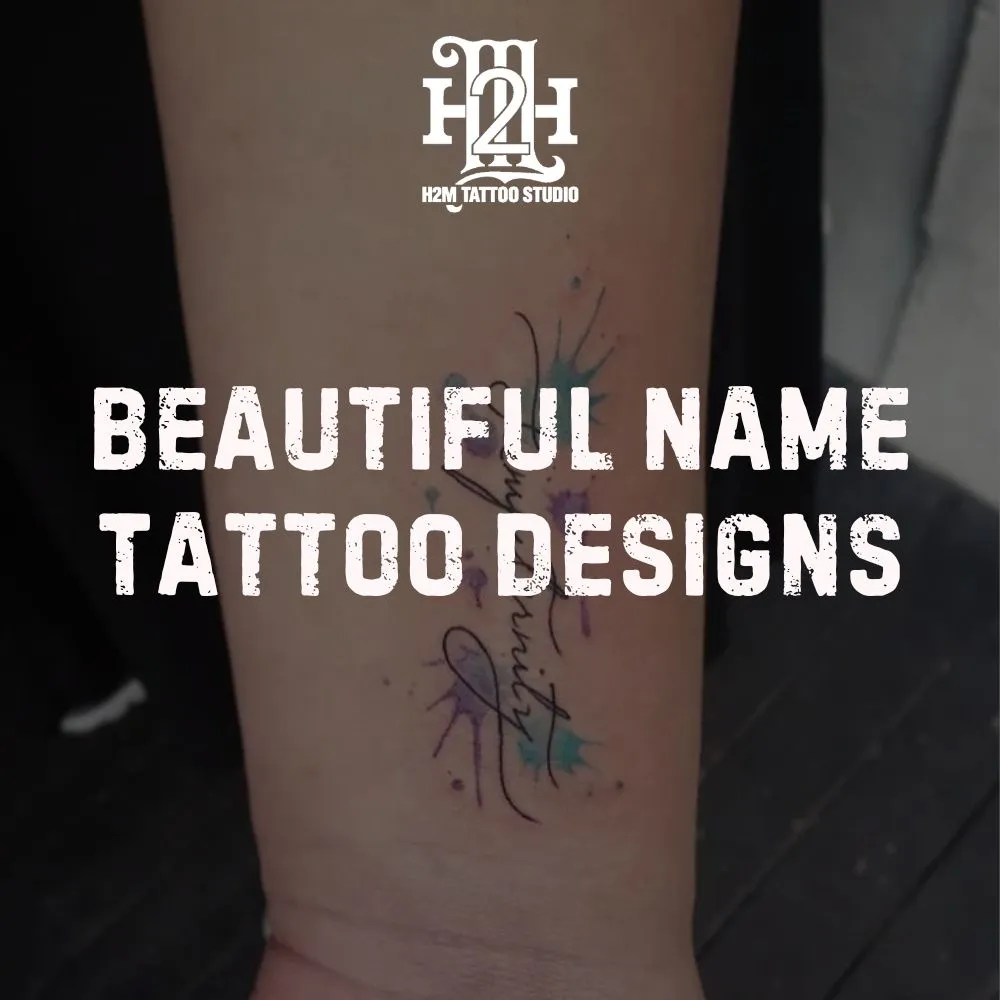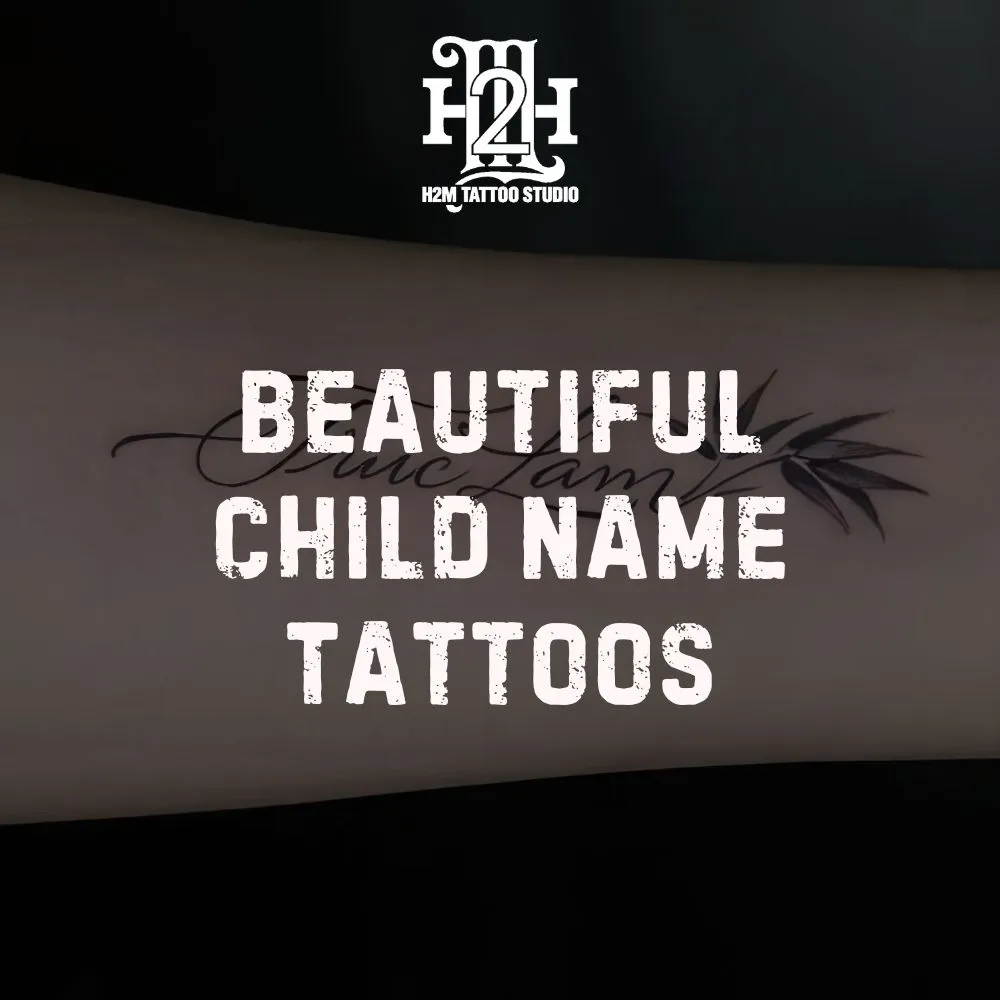When your beautiful, vibrant tattoo starts to look a little dull or patchy, a retouch is the best way to bring it back to life. But if you’re already a veteran of the needle, a single, pressing question probably keeps running through your mind: "Does tattoo retouching hurt?".
It’s a valid concern. The fear of repeating a painful experience can hold many people back from getting the necessary touch-up. At H2M Tattoo Studio, we believe in empowering you with transparent, expert knowledge.
The short answer? Yes, tattoo retouching involves some pain, but for most people, it hurts significantly less than the original tattoo.
In this complete guide, we’ll dive deep into the differences in sensation, the factors that influence pain levels, and practical tips to ensure your touch-up session is as comfortable as possible.
Understanding Tattoo Retouching
Before we address the pain, it’s essential to understand exactly what a tattoo retouch—or touch-up—involves. This foundational knowledge will help contextualize why the sensation is often different from your initial tattooing experience.
What Is Tattoo Retouching?
Tattoo retouching is a precise process where an artist works over an existing, healed tattoo to restore its original look and vibrancy.
The primary purpose of a touch-up is usually to:
- Deepen faded colors, especially light colors like white, yellow, and pastels.
- Sharpen blurred or fuzzy line work.
- Fill in patchy areas where ink dropped out during the initial healing process.
It is crucial to differentiate a touch-up from other procedures:
- Cover-Up: A complete new design tattooed over an old one, which often involves much more pain and a significantly longer session.
- New Tattoo: The initial, full tattooing process on untouched, pristine skin.
A retouch is typically a shorter, less invasive process focused only on the areas that need revitalization.
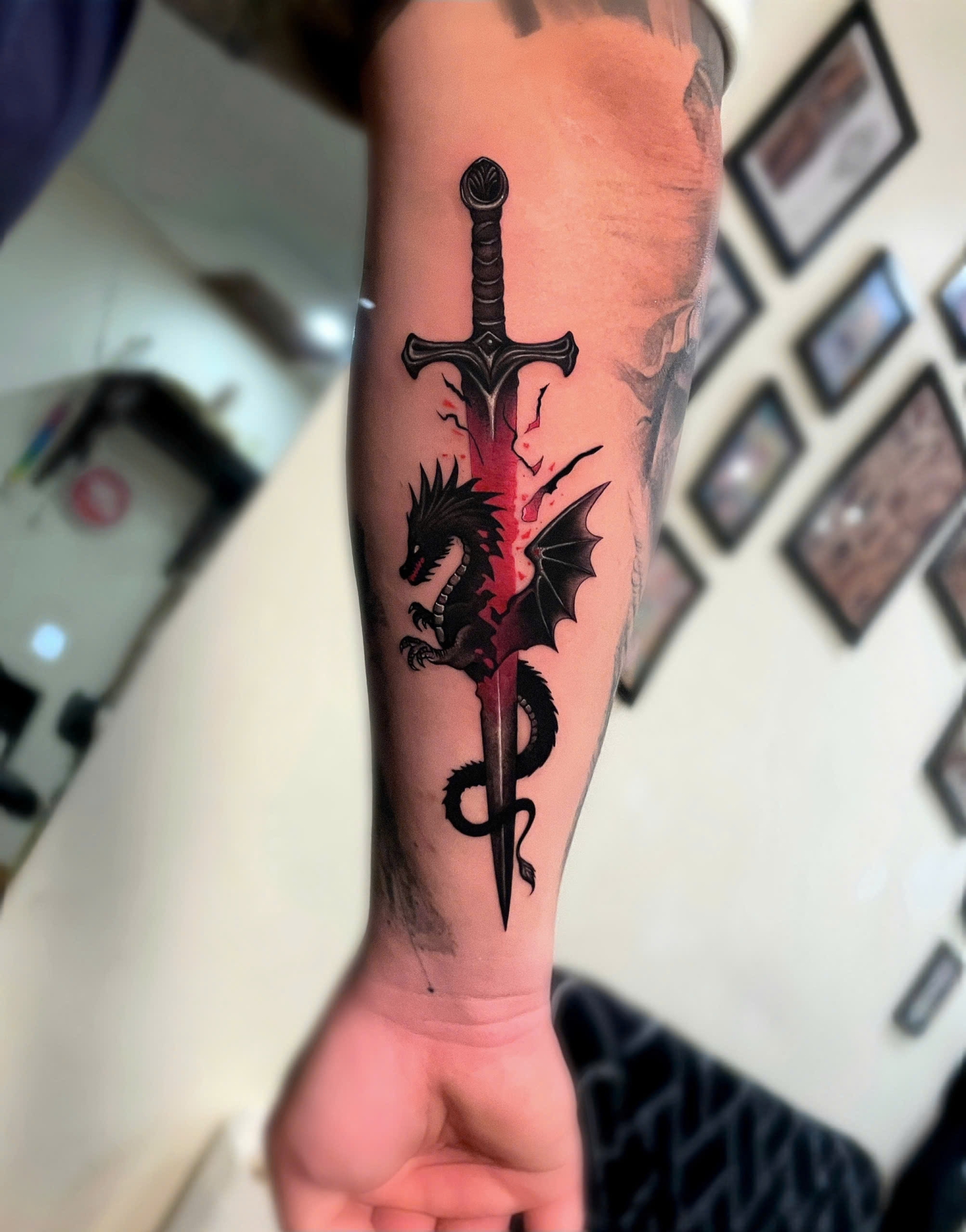
Why Tattoos Fade or Need Touch-Ups
Tattoos are permanent, but they are not immune to the forces of time and environment. Understanding the causes of fading explains why an artist needs to re-deposit ink.
Tattoos often need touch-ups due to a mix of biological and environmental reasons:
- Skin Regeneration: Your skin constantly sheds its outermost layer. Over years, this natural process causes a subtle, gradual dulling of the color.
- Sun Exposure: UV radiation is the single greatest enemy of a vibrant tattoo. It breaks down ink pigments, causing them to fade, lighten, and blur faster than any other factor.
- Ink Fall-Out: Sometimes, during the initial healing phase, small sections of ink may get pulled out along with scabs, leaving a small, pale patch. This is one of the most common reasons for a first, free touch-up.
- Scar Tissue or Healing Imperfections: If the initial tattoo didn't heal perfectly due to infection, picking, or scratching, the resulting scar tissue can distort the color or lines, necessitating a touch-up to smooth out the transition.
For example, a small, heavily-detailed wrist tattoo is much more likely to need a line-work touch-up than a large, simple black-work piece on your thigh, simply due to its proximity to constant movement and friction.
>>>> READ MORE: Does finger tattoo hurt ? Understanding Pain, Experience & Care
Pain in Tattoo Retouching: What to Expect
This is the core of your concern, and we're addressing it head-on. By exploring the physiological differences, we can provide a clear expectation for your retouch session.
Does Tattoo Retouching Hurt More or Less Than the Original?
For the vast majority of clients, tattoo retouching hurts less than the original tattoo. There are several physiological and procedural reasons for this difference:
| Factor | Original Tattoo Session | Retouching Session | Impact on Pain |
| Skin Condition | Untouched skin, requires puncturing all layers. | Skin is already broken and healed; mostly filling faded areas. | Less Pain |
| Needle Depth | Requires consistent, deep penetration to be permanent. | Often more superficial, focusing on the dermis where the ink sits. | Less Pain |
| Duration | Can be multiple hours to a full day. | Typically a much shorter, focused session (30 mins to 2 hours). | Less Pain |
| Nerves/Scar Tissue | Nerves are fully intact and sensitive. | Scar tissue may have fewer nerve endings, deadening the sensation slightly. | Variable (Often Less) |
The primary reason for the decreased pain is the shorter session length. Enduring the pain for 30 minutes is vastly easier than enduring it for four hours. Furthermore, the skin is already familiar with the needle and the healed scar tissue in the tattooed area can be slightly less sensitive than your original skin.
However, be prepared for a sensation that is still very much like getting a tattoo—a feeling of scratching, buzzing, and vibration. The artist is still using a vibrating needle to implant pigment into your skin.
Factors Influencing Pain in Retouching
While it generally hurts less, your personal pain experience is always subjective. Several key factors can influence how much discomfort you feel:
Body Area Sensitivity
- High Pain Areas: Retouching in areas like the ribs, inner thigh, feet, hands, or armpits will still be intensely sensitive because these areas have a higher concentration of nerve endings and thinner skin. The reduction in pain will be noticeable, but it won't be pain-free.
- Low Pain Areas: Areas like the outer bicep, calf, or back will likely feel like a very minor discomfort—more of an annoyance than severe pain.
Scar Tissue and Skin Condition
If the area being retouched involves significant raised scar tissue (hypertrophic or keloid scarring), the experience can be different. The scar tissue itself may have fewer nerve endings, leading to less pain, but the artist may have to work harder and longer over the tougher tissue, which can prolong the session and increase irritation.
Individual Pain Tolerance Variability
Your pain tolerance on a given day is affected by:
- Fatigue: Being tired lowers your ability to cope with pain.
- Hydration/Nutrition: Dehydration and low blood sugar significantly amplify pain signals.
- Anxiety: Fear and tension naturally make you more sensitive to the needle.
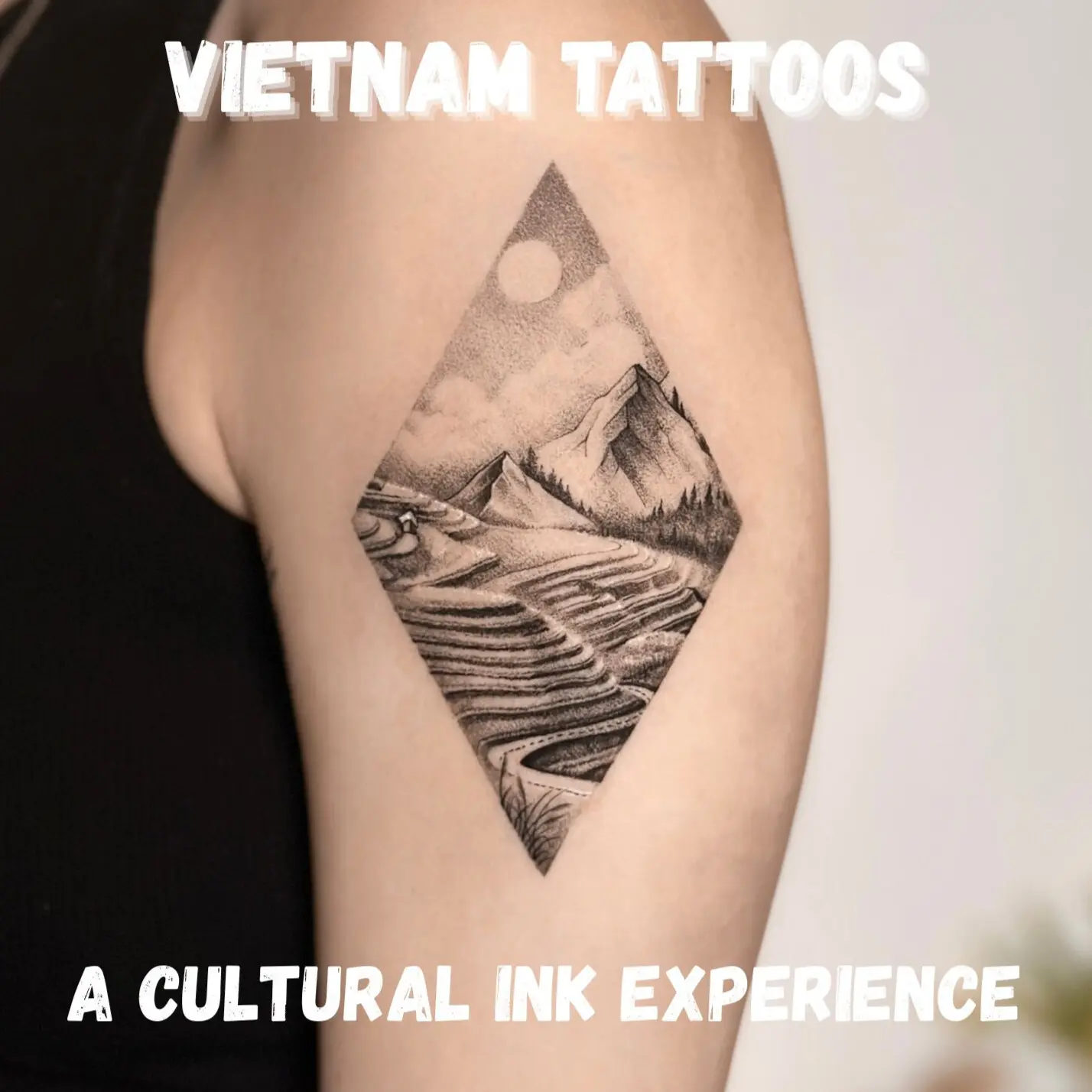
Managing Pain During Tattoo Touch-Ups
Even if the pain is minor, it’s not something you simply have to endure. You can take proactive steps to minimize discomfort.
Practical Pain Relief Tips:
- Prioritize Sleep: Get a full 7-9 hours of sleep the night before your session.
- Eat Well: Have a substantial meal high in protein and carbohydrates about 1-2 hours before your appointment. This stabilizes your blood sugar.
- Stay Hydrated: Drink plenty of water in the 24 hours leading up to your session. Well-hydrated skin is easier to work with.
- Communicate with Your Artist: Tell your artist at H2M Tattoo Studio if you are feeling genuinely uncomfortable. A good artist can take a brief break, adjust their pressure, or slow down their pace.
- Numbing Creams: Discuss the use of over-the-counter topical numbing gels (like those with lidocaine) with your artist before your appointment. If used incorrectly, they can sometimes change the skin texture, making it slightly harder to tattoo.
Set Realistic Expectations: You will feel the needle. Expect a tolerable, but distinct, scratching or stinging sensation. By being prepared, you can turn a potentially painful session into a quick and easy restoration.
>>>> READ MORE: Does wrist tattoo hurt ? A Comprehensive Guide from H2M Tattoo Studio
Timing and Preparation for Touch-Ups
When and how you prepare for a touch-up directly impacts the experience—including the level of pain and the quality of the final result.
When Should You Get a Tattoo Retouched?
The timing of your touch-up depends on the reason you need one.
- Initial Healing Touch-Ups: If the ink loss is due to the initial healing process (ink fall-out), you should wait at least 6-8 weeks after the original session. The skin must be completely healed and settled before an artist can work on it again. Attempting an early touch-up risks further irritation, infection, and potentially more scarring. Many reputable studios, including H2M Tattoo Studio, offer a complimentary first touch-up within a specific window (e.g., 6 months) for issues due to the healing process.
- Age/Fading Touch-Ups: For fading due to sun or age, you can wait until you are dissatisfied with the look, which may be many years after the original tattoo.
How to Prepare Your Skin for a Retouch Session
Optimal skin condition minimizes discomfort and ensures the ink is accepted cleanly.
Pre-Session Skin Care Routines:
- Moisturize: For the week leading up to your appointment, consistently moisturize the area with a gentle, non-scented lotion. Hydrated skin is more elastic and receptive to the needle.
- Shave (If Necessary): If the area has hair, trim it down gently the day before. Do not shave on the day of your appointment, as this can cause micro-abrasions that will irritate the skin during the session.
- Avoid Sun Exposure: Do not allow the area to get sunburned for at least 2 weeks prior to your appointment. Tattooing over compromised or sunburnt skin is significantly more painful and will negatively affect the healing.
- Clean: Shower thoroughly before your appointment.
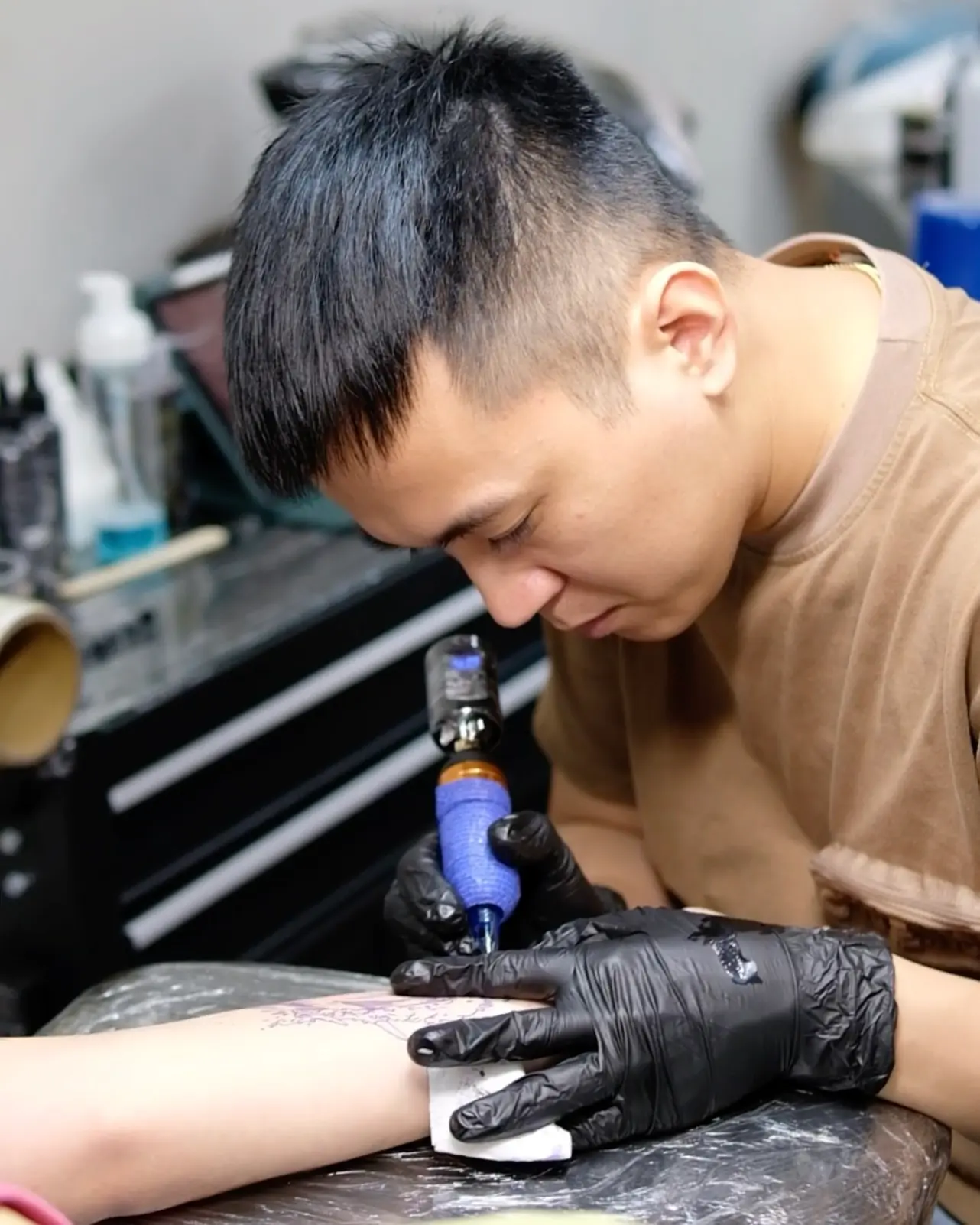
>>>> READ MORE: Does back tattoo hurt ? Pain Guide & Tips from H2M Tattoo Studio
The Tattoo Touch-Up Process
Demystifying the process helps ease any anxiety you have about the pain and experience. It's often much faster and more straightforward than you anticipate.
What Happens During a Touch-Up Session?
The steps are similar to a new tattoo session, but streamlined:
Procedural Overview Step by Step:
- Consultation & Review: Your artist will examine the healed tattoo, discuss exactly what needs to be fixed (faded color, blurry lines, etc.), and outline the scope of the work.
- Cleaning & Stenciling (If Needed): The area will be cleaned thoroughly. If significant line work is being added or adjusted, a stencil might be used, but often the artist simply works freehand over the existing lines.
- The Touch-Up: The artist will begin tattooing. They will focus only on the patchy, faded, or dull areas. The depth and speed will be calibrated specifically for touch-up work.
- Wiping & Final Review: The artist will clean the area, apply a final layer of ointment, and wrap the new work, just like a standard tattoo.
Comparison with Initial Tattoo Session:
The key difference is that a touch-up lacks the pressure and duration of a new piece. The artist is not trying to "break in" new skin or create a complex design from scratch; they are simply reinforcing an existing piece of art. This focused effort is why the pain is more tolerable.
Healing After a Tattoo Touch-Up
The healing process after a touch-up is usually faster and less intense than the original tattoo.
- Typical Healing Times: Because the area worked on is usually smaller and the skin is only being agitated where the ink is being reinforced, the intense peeling and scabbing phase is often milder and shorter. Expect the surface layer to heal within 5-7 days, with full skin settlement taking 3-4 weeks.
- Key Aftercare Points: You must treat the retouched area exactly like a brand-new tattoo. Follow all the same aftercare steps to protect the new ink and prevent needing another touch-up soon.
>>>> READ MORE: What are the least painful places to get a tattoo? Your Complete Pain-Free Guide
Maintaining Your Tattoo Post-Touch-Up
The pain of a touch-up is a temporary inconvenience; the longevity of your tattoo depends on your long-term commitment to care. Proper maintenance minimizes the need for repeat sessions.
Essential Aftercare Practices
Strict aftercare is the best way to honor your artist's work and endure the minimal pain you just experienced.
- Cleaning: Gently wash the retouched area 2-3 times a day with a mild, unscented, antibacterial soap. Pat dry with a clean paper towel.
- Moisturizing: Apply a thin layer of specialized tattoo ointment or unscented lotion several times a day to keep the skin supple and prevent cracking or scabbing.
- Sun Protection: Crucial for longevity. After the tattoo has fully healed (about 3-4 weeks), always use a broad-spectrum, high-SPF sunscreen (SPF 30 or higher) over the tattoo any time it will be exposed to the sun.
Preventing the Need for Future Touch-Ups
A few habits can help prolong the life and vibrancy of your tattoo, drastically reducing how often you’ll need a touch-up.
- Artist and Ink Quality: The best defense against frequent fading is a strong start. Choosing a reputable studio like H2M Tattoo Studio ensures your artist uses premium, high-quality ink that resists breakdown and is expertly implanted.
- Daily Care: Consistency is key. Make moisturizing and sunscreen application a permanent part of your daily routine—not just for your tattoos, but for your overall skin health.
- Avoid Submerging: While healing, avoid soaking the area (baths, pools, hot tubs) as this can pull ink out.
The fear of pain is real, but when it comes to tattoo retouching, the worry is often worse than the reality. You are prepared, your skin is familiar with the process, and the session will be significantly shorter than your original tattoo.
At H2M Tattoo Studio, we see touch-ups as a vital part of long-term tattoo ownership—a quick and relatively painless way to protect your investment and keep your art looking its absolute best for years to come.
>>>> NOTE NOW:


